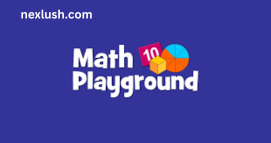Math Playground is an exciting free-to-use gaming resource, aligned to standards. This online resource could make an excellent addition to any classroom!
Notably, this website lacks account management and progress tracking features – this makes regular use more challenging.
Jumping Math play ground
Jumping Math is an interactive workbook series for Grades 1-6 designed to foster children’s thinking skills in an enjoyable, interactive manner. The series was intended to support mathematical learning for all children, regardless of logical-mathematical proficiency or anxiety toward mathematics. Through guided discovery activities and guided discovery exercises, Jumping Math helps young people overcome any fear associated with mathematics.
Jump Math helps students grasp the concept of addition by employing a number line. In order to complete addition problems, learners must jump right or left depending on whether adding or subtracting. As part of its initial step, Jump Math splits numbers into tens and ones so, for instance, 53 can be broken into five ‘jumps’ of 10 and two ‘jumps’ of one.
Jumping Math workbooks include activities and games tailored specifically to young children; however, most young children will require assistance from either their parents or teachers as lessons vary in format. Free answer keys may prove useful online for parents as the lessons change structure. The first two books cover regrouping for both addition and subtraction while multiplication and fractions are introduced later on. It fully aligns with Canadian curriculum outcomes while the authors also created a version for US students; educators have reported improved Woodcock test results after using Jumping Math.
Hot Potato Math playground
Hot Potato provides children with a classic game for practicing counting and reciting numbers, while having fun. Playing Hot Potato in groups fosters cooperation and social skills development while building gross motor abilities and gross motor coordination. In addition, playing this classic game helps children learn how to wait their turn patiently as well as developing cognitive abilities such as listening.
This version of the classic game adds a math component and can be played either individually, in small groups, or by an entire class for an engaging review of addition or multiplication facts. Advanced players may attempt to shout out multiplication and division facts before catching their potato!
As well as helping students develop essential arithmetic and literacy skills, this version of the game also encourages vocabulary expansion and creative thought. Students can identify words that start with certain letters or relate to themes before passing the potato along to another student. Furthermore, reading and literacy development skills can be promoted by asking players to read an entire passage from a story before catching it themselves.
Dance Revolution Math
Students benefit greatly from using movement and dance in Maths classrooms to help them better comprehend number theory and logic through creative experiences, while at the same time encouraging creativity, critical thinking and motivation. A simple dance activity such as Maypole Dance offers students a great way to investigate angles by watching patterns formed from ribbons hanging on its Maypole change over time – creating patterns from movement.
Students can use the popular music game Hot Potato to practice multiplication problems in an innovative and engaging way. Students should create a pad of poster board with numbers 0-9. When music stops, they must stand up and place one foot on either the tens or units to win that round of play.
Erik Stern and Karl Schaffer’s TED talk, who direct a dance ensemble in California, provides another method for using dance to teach maths. They demonstrate how dance movements and mathematical concepts such as symmetry are closely intertwined. For instance, both processes require processes such as noting changes, remembering sequences, asking whether something is bigger or smaller and testing to see if consistency exist etc (Admin, 2017). A website dedicated to connecting dance with mathematics exists through SEAQiM: the regional centre for QITEP in Mathematics which addresses multiple forms of dance as well as ways they may connect to mathematics (Admin, 2017).
Number Juggling of math playground
As part of our new math playground, students can enjoy playing a range of engaging and enjoyable games. At one school alone, the number of hours spent playing these games increased more than twofold while quadrupling at another – evidence that our new math playground game is truly successful.
These math games are ideal for classroom use and offer an engaging way for students to remain focused while learning. From whole class or small group work, these engaging games encourage collaboration and teamwork between classmates while helping build math skills in an entertaining and fun atmosphere.
Candy Cashier allows students to practice money counting while having fun, while Penguin Jump provides children with an engaging way of practicing multiplication skills. Meanwhile, Division Derby gives students a competitive yet educational way of practicing division.
Other math playground games include Bouncing Sums, which helps students read integers, decimals and fractions. Students place labels with integers, fractions and decimals on a beach ball and toss it around. Each student takes turns reading the label touching their thumb while adding or multiplying with preceding numbers; first one to reach specified number wins.
Must Read : Tradutor

[…] Must Read : what is the math playground […]